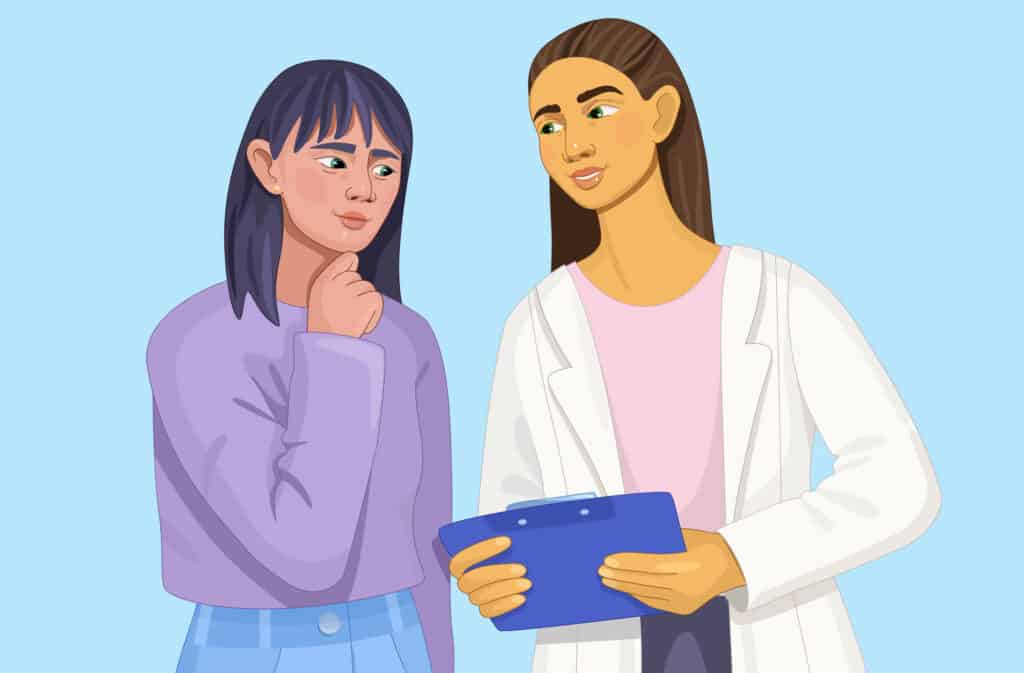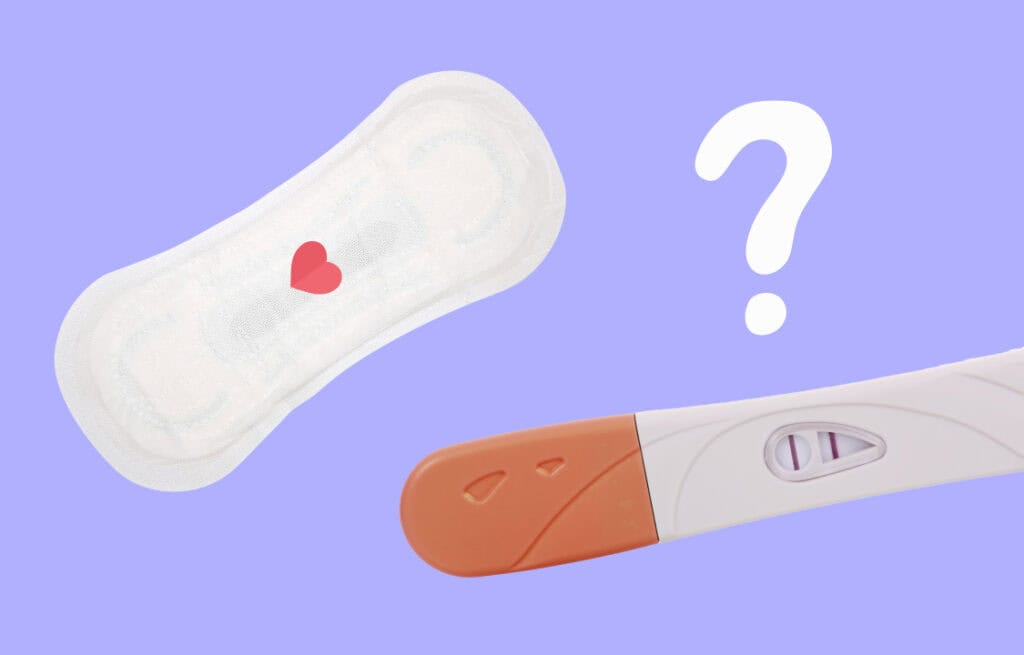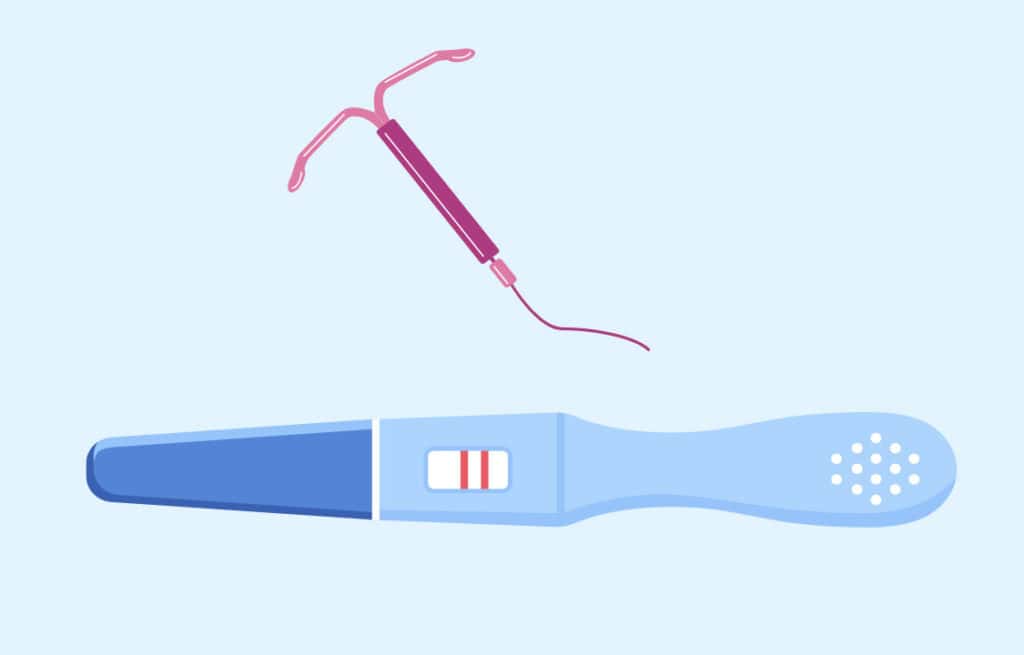Femia > Health Library > Getting Pregnant > Planning pregnancy > Ovulation after miscarriage: How to track and conceive faster
Ovulation after miscarriage: How to track and conceive faster

- Updated Feb 11, 2025
- Published
CRAFTED BY HUMAN
Crafted by human At Femia, we provide accurate and up-to-date information at every stage of your journey, from trying to conceive, pregnancy and postnatal support. All content is created by a real person based on in-depth research and own professional experience. Femia ensures that you will receive expert advice, strict accuracy and a personalized approach from our authors/medical experts. Learn more about our editorial policy.
FACT CHECKED
Fact checked At Femia Health, we maintain the highest standards of editorial excellence in delivering content focused on helping you conceive, guiding you through pregnancy, and supporting you postpartum. Explore our content review principles to learn how we ensure the accuracy and quality of our health and lifestyle tips for every stage of your journey.

Created with Hector Chapa, MD, FACOG, Clinical associate professor, Obstetrics and Gynecology Texas A&M University, College of Medicine in Bryan-College Station, USA
- Ovulation after miscarriage can resume within 2 weeks, especially if the miscarriage was under 12 weeks. However, timing may vary depending on how far along the pregnancy was and how regular your cycle was pre-pregnancy.
- Tracking ovulation using cycle tracking apps, ovulation predictor kits, and monitoring cervical mucus and basal body temperature can help predict when ovulation might restart.
- Deciding when to start trying again after a miscarriage is a deeply personal decision and there is no right or wrong answer. Making sure you’re emotionally ready is just as important as being physically ready.
Ovulation may return as early as two weeks after a miscarriage, but the timing can vary based on how far along the pregnancy was and how regular your cycle was before pregnancy.
While your body may recover from a miscarriage within a few weeks, emotional healing is just as important. Some women may feel ready to start trying again right away, while others need time to process their experience before considering pregnancy. The decision about when to start trying again is deeply personal, and there is no right or wrong answer. This guide will explore when ovulation may return after miscarriage and key factors to consider.
Track your fertility and get personalized prenatal supplement advice
When does ovulation occur after a miscarriage?
According to the American College of Obstetricians and Gynecologists (ACOG), ovulation can start as soon as 2 weeks after an early miscarriage. Most women find that their periods return 4-8 weeks after miscarriage, although for some it can take several months for their cycle to become regular. Because ovulation happens in the middle of the cycle, it’s possible to start ovulating before you have your first proper period following a miscarriage.
👉Find out more: The best prenatal vitamins for pregnancy: Recommendations from the OBGYN
What factors can delay ovulation after miscarriage?
Four key fertility hormones regulate ovulation and your menstrual cycle. During pregnancy, their balance shifts to prevent ovulation and your period. After a miscarriage, it takes time for these hormones to return to pre-pregnancy levels and for ovulation to resume. Several other factors can also influence when ovulation occurs:
- Gestational age of pregnancy. Ovulation can resume as early as 2 weeks after early miscarriage (before 13 weeks). However, it can take several months to start again if you had a second-trimester miscarriage. This is because your hormones will likely take longer to return to pre-pregnancy levels. Talk to your healthcare provider for advice on when to start trying again if you had a late miscarriage as they may advise a period of waiting.
- hCG levels. The pregnancy hormone hCG stops your body from ovulating while you’re pregnant (amongst other things). This means before ovulation can resume, hCG levels have to drop. How far they have to drop however is different for every woman and you can’t predict it.
- Individual cycle regularity. If your cycle was irregular before you became pregnant, it’s likely to be irregular after. This might mean that ovulation takes longer to resume.
Signs of ovulation after miscarriage
Looking out for signs of ovulation after miscarriage can help you to understand what is happening with your body and menstrual cycle. Recognizing the signs of fertility after miscarriage can help you decide when to start trying again or begin contraception if you’re not ready for another pregnancy.
Several key signs indicate ovulation might be about to occur, let’s break them down:
- Changes in cervical mucus: Your cervical mucus changes in appearance and texture over the course of your cycle. Around the time of ovulation, it becomes clear and stretchy, a bit like the texture and appearance of egg whites.
- Changes in basal body temperature: Tracking your basal body temperature (your temperature as soon as you wake up) can help you to know if you’ve ovulated. Your body temperature increases straight after ovulation, the change is subtle but if you’ve been tracking your temperature then you should be able to recognize the shift.
- Mittelschmerz (ovulation pain): Some women experience a one-sided pain in their lower tummy as the egg is released from the ovary. For those experienced with this unique sign, it can be a good indicator that they’ve just ovulated.
Are you more fertile after a miscarriage?
Unfortunately, miscarriage is a common experience, affecting about 10% to 15% of known pregnancies. Many women worry about their chances of conceiving again after a miscarriage and whether they might experience another miscarriage.
Does having a miscarriage affect your fertility?
While there is a popular myth that says you’re super fertile after a miscarriage, the truth is a little bit more complex. A 2016 study of over 1,000 women found that couples who started trying again within 3 months of miscarriage were able to get pregnant again quicker than those who waited longer than 3 months.
However, another study published in the Human Reproduction Journal followed 2,983 women and found that it took them longer to get pregnant again after a miscarriage than it did before having a miscarriage. These mixed results show us there is currently no consensus on fertility immediately after miscarriage, but it’s important to note that most women will go on to have a successful pregnancy.
What are the chances of having another miscarriage?
According to the ACOG, having a miscarriage is usually a “one-time event” and most women will go on to have a successful pregnancy. After having one miscarriage, the risk of having another is about 20% (meaning 80% of women won’t). However, if you have had two miscarriages the risk rises to 25%, and then to 30%-40% after three or more.
Interestingly, a large review of multiple studies published in the journal Human Reproduction found that women who became pregnant again within 6 months of a miscarriage were less likely to have a further miscarriage than those who became pregnant more than 6 months after a miscarriage. This large systematic review looked at the data from 16 studies and included over 1 million women in total.
Track your fertility and get personalized prenatal supplement advice
Tracking ovulation after miscarriage
Every woman should consider tracking their cycle, regardless of whether they’re trying to get pregnant or not.
Cycle tracking enables you to keep track of when your period is due, and when you’re fertile, and crucially, it helps you to detect any changes or problems with your menstrual cycle quickly. Here are some simple tools that can help you to track your cycle:
- Ovulation predictor kits: Just before ovulation, luteinizing hormone (LH) surges, triggering the release of an egg. At-home ovulation kits detect LH levels in your urine, helping identify when you might ovulate as ovulation occurs around 24-36 hours after the LH surge.
- Cycle tracking apps: Using an app like Femia makes cycle tracking straightforward and hassle-free. Many apps allow you to input a wide range of symptoms including cervical mucus changes, temperature tracking, and mood changes to give you an accurate picture of your overall cycle.
- Menstrual cycle diary: If you prefer to keep it old-school, then keeping a written diary can also help you to track where you are in your cycle and keep note of any changes.
👉Find out more: Odds of getting pregnant by age chart: Fertility and pregnancy chances explained
Tips to conceive faster after miscarriage
It’s totally ok to want to quickly get pregnant again after a miscarriage and it’s also totally ok if you prefer to wait a while. That decision is entirely personal, but when you feel ready to start trying again, here are some top tips to help you conceive quickly:
- Focus on timing. Having sex during your fertile window, ideally 2-3 days before ovulation, gives you the best chances of conceiving.
- Eat a fertility-supporting diet. Diet can influence hormone levels and fertility. Prioritize getting a balanced diet that includes foods that support your reproductive health like leafy greens, berries, and omega-3 fatty acids-containing foods such as salmon and tuna. You should also include foods rich in iron such as red meat, beans, and eggs as miscarriage can cause low iron levels.
- Consider supplements: Fertility supplements can support your fertility and help regulate hormones, however, you should always check with your healthcare provider before you start taking any new supplements or medication. They may also recommend taking certain supplements that contain iron or folic acid depending on how you’re feeling and when you wish to start trying again.
- Manage stress: Having a miscarriage can be an extremely upsetting and emotional time. Looking after your mental health is just as important as looking after your physical health. Keeping open communication with your partner about how you’re both feeling can help you both to recover. You can also reach out to trusted friends and family for support or to your healthcare provider if you feel you need additional help.
- Monitor underlying conditions: If you have any conditions that might affect your fertility, like PCOS, endometriosis, or thyroid problems, reach out to your healthcare provider to make sure these are being managed appropriately.
Emotional and physical readiness
Before trying to conceive again after miscarriage, it’s essential to allow both your body and mind time to heal. While physical recovery might happen quickly, emotional healing can take longer, and processing your experience is just as important.
Many women go through a bereavement period after a miscarriage, and it’s normal to feel tired, lose your appetite, and have difficulty sleeping during this time. Reaching out for support from family and talking to your partner about your feelings can help you process your grief.
To protect your physical recovery, and reduce the chances of developing an infection, you should also stick to the following guidelines for the first week or two:
- Avoid sexual intercourse
- Don’t put anything in your vagina – for example, tampons
- Avoid swimming and hot tubs
- Take showers, not baths
- Don’t douche
| Good to know: |
|---|
| Depending on your personal circumstances, your healthcare provider might recommend waiting for a certain period before having sex again after a miscarriage or trying to get pregnant. |
When to consult a doctor
During a miscarriage, you should seek urgent medical advice if you have any of the following symptoms:
- Heavy bleeding. Bleeding soaks through more than two large pads in an hour, for 2 hours or more.
- Dizziness or fainting
- High temperature above 100F
- Diarrhea or pain opening your bowels
- Unpleasant-smelling vaginal discharge
- Other concerning symptoms such as chills, severe pain, or generally feeling very unwell
Once you’ve physically recovered from a miscarriage, you should also reach out to your healthcare provider if you have any of the following:
- Ovulation hasn’t resumed in 8 weeks
- Your cycle remains irregular after several months
- You would like support to help manage your grief or you’re worried about your mental health
- This is not your first miscarriage
Questions from the Femia community
Can I get pregnant immediately after a miscarriage without having a period?
Yes, it’s possible to conceive before your first post-miscarriage period. This is because ovulation occurs in the middle of the cycle, around two weeks before your period. So, it’s possible to ovulate before you’ve had your first normal period after a miscarriage. If you don’t want to get pregnant straight away, then make sure you’re using contraception.
Does miscarriage increase the chances of twins?
No, there is no evidence to suggest that having a miscarriage increases your chances of having twins.
Can tracking hCG levels help determine ovulation timing after a miscarriage?
Yes and no. Ovulation can only resume once hCG levels drop below a certain threshold. However, the exact level needed and the time it takes to reach it can vary for each woman and can’t be predicted. While declining hCG levels can indicate ovulation is approaching, they don’t provide an exact timeline.
The bottom line
After a miscarriage ovulation can restart in as little as two weeks, especially if the miscarriage occurred in the first trimester. Some women will find themselves eager to start trying again as soon as possible, while others prefer some time to process their experience. There is no right or wrong answer but if you feel ready, then it’s important to know that getting pregnant straight away won’t increase the risk of further miscarriage or pregnancy complications.
Using a cycle-tracking app to track cervical mucus appearance and basal body temperature can help you to predict when ovulation might occur. You can also use at-home ovulation predictor kits to detect the LH surge that occurs just before you release an egg. Timing sex around when you’re most fertile, alongside optimizing your overall health, can give you the best possible chances of conceiving again quickly after miscarriage.
References
- Early pregnancy loss. (n.d.). ACOG. https://www.acog.org/womens-health/faqs/early-pregnancy-loss?utm_source=redirect&utm_medium=web&utm_campaign=otn.
- Hassan, M., & Killick, S. (2004). Is previous aberrant reproductive outcome predictive of subsequently reduced fecundity? Human Reproduction, 20(3), 657–664. https://doi.org/10.1093/humrep/deh670.
- Kangatharan, C., Labram, S., & Bhattacharya, S. (2016). Interpregnancy interval following miscarriage and adverse pregnancy outcomes: systematic review and meta-analysis. Human Reproduction Update. https://doi.org/10.1093/humupd/dmw043.
- Pregnancy after miscarriage: Trying again. (n.d.). Mayo Clinic. https://www.mayoclinic.org/healthy-lifestyle/getting-pregnant/in-depth/pregnancy-after-miscarriage/art-20044134.
- Professional, C. C. M. (2024, July 3). Basal body temperature. Cleveland Clinic. https://my.clevelandclinic.org/health/articles/21065-basal-body-temperature.
- Schliep, K. C., Mitchell, E. M., Mumford, S. L., Radin, R. G., Zarek, S. M., Sjaarda, L., & Schisterman, E. F. (2016). Trying to conceive after an early pregnancy loss. Obstetrics and Gynecology, 127(2), 204–212. https://doi.org/10.1097/aog.0000000000001159.
- Website, N. (2024, March 28). Afterwards. nhs.uk. https://www.nhs.uk/conditions/miscarriage/afterwards/.
- What happens after a miscarriage? An Ob-Gyn discusses the options. (n.d.). ACOG. https://www.acog.org/womens-health/experts-and-stories/the-latest/what-happens-after-a-miscarriage-an-ob-gyn-discusses-the-options#.

Discover the symptoms and causes of an anteverted uterus, its impact on fertility, and pregnancy. Learn why this common uterine position is not a concern for conceiving.

Understand the possibility of pregnancy even after – or before – getting your period. Learn about menstrual cycles, early pregnancy signs, and when to take a pregnancy test.

Discover how long it takes to get pregnant after IUD removal, factors affecting pregnancy after IUD removal, and potential reasons for delay. Learn tips for boosting fertility post-IUD removal.
